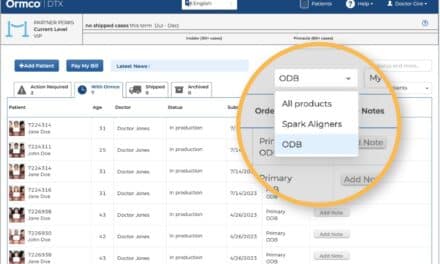By Marco Pinto, DMD, adjunct professor, Arizona School of Dentistry and Oral Health
Orthodontic treatment used to be geared mostly to teenagers, but according to the American Association of Orthodontists, more than 1 million adults (who represent about 20% of orthodontic patients) now are undergoing orthodontic treatment. Among the adult patients, people in their 60s and 70s represent a fast-growing group. As rates of toothlessness decline and people live longer, more seniors are seeking out orthodontic treatment. These adult patients prefer low-visibility white ceramic braces and clear braces, but especially lingual braces (which are bonded to the back of the teeth so they can’t be seen).

- Simplifies insertion, especially with lingual brackets that have a low profile—for example, the second lingual bracket.
- Allows a higher degree of patient comfort, since the elastic thread runs parallel to the lingual wire and follows a “figure 8” pattern around the brackets. Therefore, the interbracket lingual wire is less noticeable for the patient.
- The placement of the elastic thread takes less time than the power chain with this type of bracket.
- The clinician has better control of the amount of tension desired, using the elastic thread.
With this technique, it is not uncommon to see lower canine rotation. In order to counteract this undesired side effect, a second order bend should be placed. Using the second brackets, it is also beneficial to tie the elastic thread under the distal arm of the brackets on both canines.
The author would like to thank Dr Milde for his contribution.





